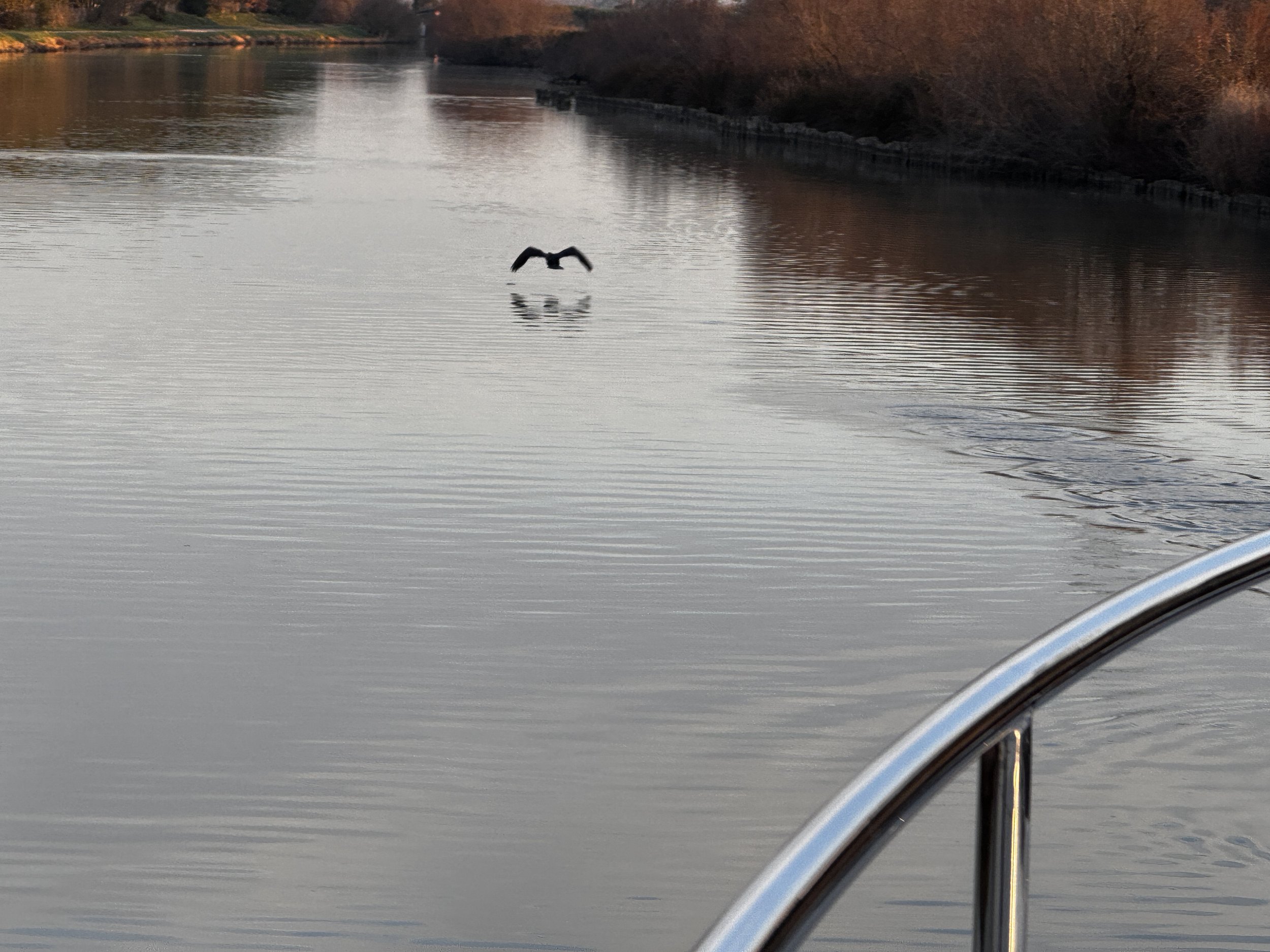Canal du Rhône à Sète
Our route from the Mediterranean (green), the first lock - closed for repair (red).
We spent a day exploring the town of Aigues Mortes, located 6km from the sea. This fortified city founded in the 13th century is said to be a starting point of the crusades. It is a remarkably well preserved, walled, medieval city with a small marina beneath which makes for a picturesque stopover. We were fortunate enough to be moored directly beneath the famous Constance Tower, one of five towers on the ramparts encircling the town. Surrounded by sandy marshes Aigues-Mortes was originally a small hamlet of fishermen and salt collectors. To the south of the city, the vast flooded lands have been shaped for centuries by variations in sea level and changes in the bed of the Rhône River. Saltwater lagoons, reed beds, marshes and freshwater ponds, create one of the most unique landscapes in France. This vast wetland is home to a huge variety of birds and wildlife - making it a Mediterranean biodiversity hotspot.
We strolled the cobbled streets inside the walls, stopping at art galleries, window shopping and sampling the specialties at cafes and boulangeries (bakeries). Outside the castle walls was an equally busy little town. We found a pizza place and picked up dinner to bring back to the boat.
The French eat a significant amount of pizza, and are considered to be among the highest consumers per capita globally, right after the USA. Considering their proximity to Italy and their exceptionally skilled bakers, they have developed a unique French-style pizza. The biggest change, as you might expect, is in the cheese. This pizza has a thick fluffy crust and is topped with Emmental instead of Mozzarella. Most pizzas include additional cheeses - usually Gruyère, Cantal or Roquefort which makes for a delightful variety of textures and flavors!
After dinner we wondered down the waterfront admiring the many Dutch barges. I may have discovered my next liveaboard when we retire Meraki!






















We left our mooring beneath the castle on a calm sunny morning. We crept up the channel, under a few bridges and out into our first real canal - the Canal du Rhône à Sète, a slightly larger waterway that connects the seaside town of Sète to the inland waterways. I enjoyed the bird life and the Camargue horses which roam free in the marshland. We had planned to pass our first lock, Ecluse Saint-Gilles, and continue on as far as the next canal today but we discovered that the lock was closed for repair. We turned around towards a free parking “dock" along an adjacent embranchment where we could investigate our options. The junction of the two waterways was slightly broader than the canal itself so we spent some time there trying to recalibrate our malfunctioning compass. We didn’t make much progress so we carried on and tied up at tiny little public dock - large enough for one boat. The sign said 24-hour Parking, but we planned to stay until the lock was open.










It would be a full week before the lock was scheduled to reopen. We thought about returning the way we’d come, out into the Med once again, and reentering the canal system somewhere else, but quite honestly I was averse to backtracking. And besides, I had already transitioned to ‘canal time’ (read: meandering lazily along between the embankments). Once settled, we both realized how incredibly perfect this spot was. We were in a wilderness teeming with life, about 3 km from a village along a bike/walking path, with nothing but the sounds of birdsong, ducks and frogs. It was like glamping with hot running water, a cozy bed, a heater and a fridge full of food. I was in heaven!
The week passed slowly. One full day was spent arranging and rearranging all the bits and bobs on the roof trying to find a location to move the dinghy when the time came. We spun her around on the cradle and removed the motor, then launched her and tried muscling her onto the swim platform behind the boat - though without success. The limited sight lines would not allow us to lash the dinghy to the foredeck. Tom did, in the end, devise a method of hanging the dingy off the stern which will require a 4.5-meter plank, but we think we will bring Meraki further up into Saint-Gilles which will cut the walk back to the boat with the timber down to only 1.3 kilometers.
We did a lot of canal planning; researched the changing river currents - especially after a hard rain, checked out possible overnight moorings on free docks and town quays, and tried to educate ourselves about the various types of locks - operated by lock-keepers, automated and manual. We did lots of boat chores sprinkled with plenty of down time: biking and walking, bird watching, writing and cooking. Several rainy days afforded me an opportunity to bake bread and make peace with my oven.














I spent hours watching what I think are Great Cormorants (?) fishing and performing a well choreographed synchronized swimming routine.






